Dec. 2, 2013 Ann Arbor City Council: Preview
The Ann Arbor city council’s Dec. 2, 2013 agenda is comparatively light, but might not lead to an especially short meeting.

Screenshot of Legistar – the city of Ann Arbor’s online agenda management system. Image links to the Dec. 2 meeting agenda.
Items that could result in considerable council discussion include final approval of a repeal of the city’s crosswalk ordinance. A scheduled public hearing on that issue could also draw a number of speakers. The council gave initial approval to the repeal at its Nov. 18, 2013 meeting – on a 9-2 vote.
The tally could be closer for the final vote, as mayor John Hieftje, Sabra Briere (Ward 1) and Chuck Warpehoski (Ward 5) could join Christopher Taylor (Ward 3) and Margie Teall (Ward 4), who had dissented on the initial approval. Also a possibility is that a compromise approach could be worked out. The possible compromise would leave intact the language about motorists stopping, but still limit the right-of-way to just pedestrians within a crosswalk – that is, it would not afford the right-of-way to those standing at the curb.
Some of the public’s perspective and council discussion on the crosswalk issue might be aired out during the council’s Sunday caucus, held in council chambers at city hall. This week the caucus has been rescheduled for 1 p.m. instead of its usual evening start time, in part to accommodate more discussion of the local crosswalk law.
Another topic that could extend the meeting is related to the pending sale of the Edwards Brothers property on South State Street to the University of Michigan for $12.8 million, which was announced in a press release last week. A right of first refusal on the property is held by the city of Ann Arbor as a condition of a tax abatement granted by the city council almost three years ago, on Jan. 18, 2011.
There’s some interest on the council in holding a closed session on Dec. 2 to review the options and the impact of those options. Any interest on the council in acquiring the land, which seems somewhat scant, would be based on a desire eventually to put the land back on the tax rolls. The topic of land acquisition is one of the legal exceptions to the Michigan Open Meetings Act, which requires all deliberations of a public body to be open to the public. If the council holds a closed session on that topic, it could extend the Dec. 2 meeting.
One reason the council may have little appetite for acquiring the Edwards Brothers property is that the city has just now managed to sell a downtown property the city acquired 10 years ago – the old Y lot on William Street, between Fourth and Fifth avenues. Approval of the $5.25 million sale to Dennis Dahlmann came at the council’s Nov. 18 meeting. But it’s possible that not all the due diligence will be completed before Dec. 16, when the city owes the $3.5 million principal it used to purchase the property. As a hedge against that possibility, the council will be asked on Dec. 2 to approve a six-month extension on the installment purchase agreement with Bank of Ann Arbor for the $3.5 million.
In the meantime, the minutes of the Ann Arbor Downtown Development Authority’s most recent operations committee meeting reflect the DDA’s expectation that all of the equipment used to operate the public surface parking facility at the old Y lot will need to be removed by Dec. 31, 2013.
The city’s right of first refusal on the Edwards Brothers property is linked to a tax abatement. And on the council’s Dec. 2 agenda is an item that would establish an industrial development district (IDD) for a different property, at 1901 E. Ellsworth, where Extang Corp. and GSG Fasteners are located. Creating an IDD is a step in the process for granting a tax abatement.
Land control and use is a predominant theme among other Dec. 2 agenda items as well.
The council will be asked to give initial approval to a rezoning request for the Traverwood Apartments project – from ORL (office, research and light industrial district) to R4D (multiple-family district). The First Martin Corp. project would include 16 two-story buildings for a total of 216 one- and two-bedroom units – or 280 total bedrooms. The site plan and final rezoning approval would come before the city council at a future meeting. The Dec. 2 meeting will also include council’s consideration of a donation of 2.2 acres to the city from Bill Martin just north of the Traverwood Apartments project site. The acreage to be donated is next to the city’s Stapp Nature Area and the Leslie Park golf course.
At its Dec. 2 meeting, the council will also be asked to approve the site plan for a three-story addition to the Running Fit store at the corner of Fourth Avenue and Liberty Street in downtown Ann Arbor. The first floor will be retained as retail space, but six residential units would be built on the upper three floors – one two-bedroom and five one-bedroom units.
The city council will also be asked to place a value on land currently used as on-street parking spaces – $45,000 per space. By formally adopting that figure, any future development that causes the removal of on-street parking could be charged that amount. It would be paid to the Ann Arbor DDA, which manages the city’s public parking system. In this matter, the council would be acting on a four-year-old recommendation, approved by the Ann Arbor DDA in 2009.
In non-land issues, the council will be introduced to newly hired firefighters at its Dec. 2 meeting. The budgeted staffing level for the fire department is 85. However, the statistical section from the most recent comprehensive annual financial report (CAFR) for the city shows 82 AAFD staff in fiscal year 2013. That’s because the council approved the hiring of additional firefighters after the fiscal year began, bringing the total to 85.
The CAFR itself is indirectly included in the council’s agenda – as part of a presentation that will be given by chief financial officer Tom Crawford on the result of this year’s audit. It was a clean audit that showed the general fund doing about $2.4 million better than budgeted.
Among the other myriad statistics in the CAFR are the number of parking violations recorded by the city – which are again down in the range of 90,000, as they’ve been for the last three years. That’s about half what they were in 2006 and 2007. Those numbers in the CAFR don’t include University of Michigan parking tickets – although the city and the UM have an agreement under which the city processes tickets and hears appeals for the university. A renewal of that agreement is on the council’s agenda for Dec. 2.
On Dec. 2 council also has a fair amount of its own internal business to wrap up, associated with the seating of the new council, which took place at the council’s Nov. 18 meeting. That includes adoption of the council rules. Based on a less than 10-minute meeting of the council’s rules committee on Nov. 29, no changes to the rules will be put forward at this time. Based on that meeting, it appears that Sally Petersen (Ward 2) will replace Stephen Kunselman (Ward 3) on that council committee. The rest of the new council committee assignments are also supposed to be made at the Dec. 2 meeting.
The council’s calendar of regular meetings and work sessions will also be adopted at the Dec. 2 meeting. The basic pattern is first and third Mondays for regular meetings, except when there’s a holiday or an election during the week of the meeting.
This article includes a more detailed preview of many of these agenda items. More details on other agenda items are available on the city’s online Legistar system. The meeting proceedings can be followed Monday evening live on Channel 16, streamed online by Community Television Network.
Crosswalk Law
The council will be asked to give final approval of a repeal of the city’s crosswalk ordinance. The council gave initial approval to the repeal at its Nov. 18, 2013 meeting – on a 9-2 vote.
Current Ann Arbor local law differs in two ways from the state’s Uniform Traffic Code. First, under current local law, motorists in Ann Arbor are supposed to yield the right-of-way to those pedestrians not just “within a crosswalk” but also to those who are “stopped at the curb, curb line or ramp leading to a crosswalk.” Second, when driving toward a crosswalk, motorists in Ann Arbor don’t have the option to yield to a pedestrian by merely slowing down; instead, they’re required to yield by stopping.
Here’s what the current law says (as a result of amendment on Dec. 19, 2011):
10:148. Pedestrians crossing streets
(a) When traffic-control signals are not in place or are not in operation, the driver of a vehicle shall stop before entering a crosswalk and yield the right-of-way to any pedestrian stopped at the curb, curb line or ramp leading to a crosswalk and to every pedestrian within a crosswalk when the pedestrian is on the half of the roadway on which the vehicle is traveling or when the pedestrian is approaching so closely from the opposite half of the roadway as to be in danger.
(b) A pedestrian shall not suddenly leave a curb or other place of safety and walk or run into a path of a vehicle that is so close that it is impossible for the driver to yield.
(c) Every pedestrian crossing a roadway at any point other than within a marked crosswalk or within an unmarked crosswalk at an intersection shall yield the right-of-way to all vehicles upon the roadway. (Corresponds to UTC rule 706)
For more detail on the evolution of the local law, see “Column: Why did the Turkey Cross the Road?”
A possible compromise the council might consider would leave intact the language about motorists stopping, but still limit the right-of-way to just pedestrians within a crosswalk – that is, it would exclude those standing at the curb.
The compromise could be based on the wording of the ordinance used by Traverse City:
When traffic-control signals are not in place or not in operation, the driver of a vehicle shall stop and yield the right-of-way to every pedestrian within a marked crosswalk.
Representatives of the Washtenaw Bicycling and Walking Coalition, who are advocating against repealing the crosswalk ordinance, contend that Traverse City police enforce “within a crosswalk” by including the curb. But at the council’s Nov. 18 meeting, assistant city attorney Bob West indicated that he didn’t interpret “within a crosswalk” to mean anything except the roadway.
At least some of the community debate on the topic has included the question of whether Ann Arbor’s ordinance is unique. On a national level, the ordinance language used in Boulder, Colorado includes more than just those pedestrians within a crosswalk:
A driver shall yield the right of way to every pedestrian on a sidewalk or approaching or within a crosswalk.“
And in Seattle, a similar effect is achieved by defining the crosswalk to extend from the roadway through the curb to the opposite edge of the sidewalk:
‘Crosswalk’ means the portion of the roadway between the intersection area and a prolongation or connection of the farthest sidewalk line or in the event there are no sidewalks then between the intersection area and a line ten feet therefrom, except as modified by a marked crosswalk.
Edwards Brothers Land
A pending sale of the Edwards Brothers property on South State Street to the University of Michigan for $12.8 million was announced in a press release last week. A right of first refusal on the property is held by the city of Ann Arbor as a condition of a tax abatement granted by the city council almost three years ago, on Jan. 18, 2011.
The topic of land acquisition is one of the legal exceptions to the Michigan Open Meetings Act, which requires all deliberations of a public body to be open to the public.
The council’s deliberations on granting the tax abatement nearly three years ago contemplated the possibility that the council could be faced with a decision about whether to act on the right of first refusal, which was associated with the tax abatement. At the time, city assessor David Petrak pegged the value of the land at anywhere between $1 million and $50 million. From The Chronicle’s report of that Jan. 18, 2011 meeting:
The cover memo also indicates that the Edwards Brothers real property is located immediately adjacent to a University of Michigan park-and-ride lot, and it’s felt that UM may have some interest in purchasing the property, which would remove it from the city’s tax rolls. In that light, the city staff built a stipulation into the tax abatement that would give the city the right of first refusal on any future land sale. So if UM offered to purchase the property, the city would have an opportunity to make an offer – presumably with the idea that the city would then sell the land to some other private entity, thereby returning the land to the tax rolls.
City assessor David Petrak briefly introduced some of the background on the request to the council.
Sandi Smith (Ward 1) pressed for some additional explanation. Without additional information, she said, she could not support it. Why was the city considering the application? The answer was that by statute it must be considered.
Stephen Rapundalo (Ward 2) reminded the council that Edwards Brothers has been in Ann Arbor for over 100 years. When the previous abatement was granted, he said, the company was “this close” to moving the operation to North Carolina. Instead, due to the abatement, the company decided to remain in Ann Arbor and preserved around 400 jobs in this community.
With respect to Edwards Brothers not meeting the employment numbers required by the first tax abatement, Rapundalo cited the dire economic times, noting in particular that the book business has not exactly been thriving. So he did not want to hold the job losses against the company. He called Edwards Brothers a long-standing corporate citizen. He also said that if the company left, he would not doubt for a second that UM would pick up the property.
From the city’s CFO, Tom Crawford, Sabra Briere (Ward 1) elicited the fact that the tax abatement would apply to a new press – a typical economic requirement in a very competitive industry, he said. Petrak went on to explain the right of first refusal on the possible sale of the real estate, if Edwards Brothers decided eventually to leave anyway.
City administrator Roger Fraser elaborated in more detail on Crawford’s description of the press to be acquired. It’s particularly suited to quick turnaround on small printing jobs, and offers an opportunity to pick up some additional business for the company. The right of first refusal on the land sale, he said, was an attempt to extract some additional public benefit from the agreement.
Smith pressed for information about what the approximate cost of the land would be, if the city found itself having to contemplate whether to exercise its right of first refusal. Petrak didn’t have that information, but when continued to be pressed by Smith, he allowed that it was between $1 million and $50 million.
Mayor John Hieftje established with Crawford that there’d been no negative impact to the city’s revenues due to job losses at the company. Hieftje said the right of first refusal did not matter to him at all, but the 400 jobs at the company represented good, if not fancy, jobs. They might not earn the average $80,000 salaries that Pfizer workers earned, but they were good jobs. Hieftje also noted that the percentage of property that is abated in the city is minuscule.
…
Tony Derezinski (Ward 2) observed that 415 jobs is a lot of jobs. The fact that there’d been only a 13% drop he characterized as a “great feat.” If it were a new company, he said, they would all be out helping to cut the ribbon.
Carsten Hohnke (Ward 5) expressed his support for the abatement.
Bank of Ann Arbor Loan
An agreement to sell the old Y lot on William Street between Fourth and Fifth avenues downtown – to hotelier Dennis Dahlmann for $5.25 million – was approved by the council at its Nov. 18, 2013 meeting. [.pdf of rider] [.pdf of sales agreement]
But it’s possible that not all the due diligence will be completed before Dec. 16, when the city owes the $3.5 million principal it used to purchase the property. As a hedge against that possibility, the council will be asked on Dec. 2 to approve a six-month extension on the installment purchase agreement with Bank of Ann Arbor for the $3.5 million. The interest rate would be the same as the interest rate at which the city is currently borrowing the money – 3.89% with no penalty for pre-payment.
If additional interest is owed due to the extension of the loan, presumably the Ann Arbor Downtown Development Authority would also continue with its share of the payments. That was an arrangement agreed to in 2003 through action by the DDA’s executive committee, not the full DDA board. The DDA’s portion of the interest payments could factor into the calculation of the net proceeds from the former Y lot sale. A year ago at the council’s Oct. 15, 2012 meeting, the council adopted a resolution that indicated the proceeds of the sale would:
“… first be utilized to repay the various funds that expended resources on the property, including but not limited to due diligence, closing of the site and relocation and support of its previous tenants, after which any remaining proceeds be allocated and distributed to the Affordable Housing Trust Fund …
However, two days after the council meets on Dec. 2, the board of the Ann Arbor DDA will be considering a resolution that would waive any need to repay the DDA for those interest payments or for the expenditures by the DDA to demolish the old Y building in 2008. [.pdf of Dec. 4, 2013 draft DDA resolution on Y lot proceeds]
Possibly relevant to the question of whether the DDA can simply waive any required repayment by the city to the DDA is the source of funds used by the DDA to make those payments. In recent years, the DDA has used parking funds to make the interest payments. To the extent that in earlier years, funds captured under the DDA’s tax increment finance (TIF) may have been used to make interest payments, it’s not clear if the DDA could simply allow the city to retain those funds as part of the proceeds of the Y lot sale.
Traverwood Apartments
On the council’s Dec. 2 agenda is a project proposed by First Martin Corp. that would construct a complex of 16 two-story buildings on the west side of Traverwood Drive, north of Plymouth Road. The development is called Traverwood Apartments.
Only the initial vote on the zoning is being considered on Dec. 2. The final vote on the zoning and the site plan will appear on a future council agenda.
The project, estimated to cost $30 million, would include 16 two-story buildings for a total of 216 one- and two-bedroom units – or 280 total bedrooms. Eight of the buildings would each have 15 units and 11 single-car garages. An additional eight buildings would each have 12 units and 8 single-car garages.
The city’s planning commission recommended approval of the site plan and the required rezoning at its Nov. 6, 2013 meeting. The site is made up of two parcels: a nearly 16-acre lot that’s zoned R4D (multi-family residential), and an adjacent 3.88-acre lot to the south that’s currently zoned ORL (office, research and light industrial). It’s the smaller lot that needs to be rezoned R4D.
The Dec. 2 agenda includes the council’s consideration of a donation of 2.2 acres to the city from Bill Martin just north of the project site. The donated acreage is next to the Stapp Nature Area and the Leslie Park golf course.
Running Fit Addition
At its Dec. 2 meeting, the council will be asked to approve the site plan for a three-story addition to the Running Fit store at the northwest corner of Fourth Avenue and Liberty Street in downtown Ann Arbor.
The first floor will be retained as retail space, but six residential units would be built on the upper three floors – one two-bedroom and five one-bedroom units.
The city planning commission recommended approval of the site plan at its Oct. 15, 2013 meeting.
The location in Ward 1 is zoned D1, which allows for the highest density development in the city. It’s also located in the Main Street Historic District.
The city’s historic district commission issued a certificate of appropriateness on Aug. 15, 2013.
The project is expected to cost about $900,000.
Cost of In-Street Parking Spaces
The city council will also be asked to place a value on portions of the public right-of-way currently used as on-street parking spaces – $45,000 per space. By formally adopting that figure, any future development that causes the removal of on-street parking spaces could be charged that amount.
In this matter, the council would be acting on a four-year-old recommendation approved by the Ann Arbor Downtown Development Authority in 2009:
Thus it is recommended that when developments lead to the removal of on-street parking meter spaces, a cost of $45,000/parking meter space (with annual CPI increases) be assessed and provided to the DDA to set aside in a special fund that will be used to construct future parking spaces or other means to meet the goals above. [.pdf of meeting minutes with complete text of March 4, 2009 DDA resolution]
The contract under which the DDA manages the public parking system for the city was revised to restructure the financial arrangement (which now pays the city 17% of the gross revenues), but also included a clause meant to prompt the city to act on the on-street space cost recommendation. From the May 2011 parking agreement:
The City shall work collaboratively with the DDA to develop and present for adoption by City Council a City policy regarding the permanent removal of on-street metered parking spaces. The purpose of this policy will be to identify whether a community benefit to the elimination of one or more metered parking spaces specific area(s) of the City exists, and the basis for such a determination. If no community benefit can be identified, it is understood and agreed by the parties that a replacement cost allocation methodology will need to be adopted concurrent with the approval of the City policy; which shall be used to make improvements to the public parking or transportation system.
Subject to administrative approval by the city, it’s the DDA that has sole authority to determine the addition or removal of meters, loading zones, or other curbside parking uses.
The $45,000 figure is based on an average construction cost to build a new parking space in a structure, either above ground or below ground – as estimated in 2009. It’s not clear what the specific impetus is to act on the issue now, other than the fact that action is simply long overdue. In 2011, the University of Michigan’s Institute for Social research expansion was expected to result in the net removal of one on-street parking space. [For more background, see: "Column: Ann Arbor's Monroe (Street) Doctrine."]
The resolution on the council’s Dec. 2 agenda is sponsored by Christopher Taylor (Ward 3). Taylor participated in recent meetings of a joint council and DDA board committee that negotiated a resolution to the question about how the DDA’s TIF revenue is regulated. In that context, Taylor had argued adamantly that any cap on the DDA’s TIF should be escalated by a construction industry CPI, or roughly 5%. Taylor’s reasoning was that the DDA’s mission is to undertake capital projects and therefore should have revenue that escalates in accordance with increases in the costs to undertake capital projects. Based on that reasoning, and the explicit 2009 recommendation by the DDA to increase the estimated $45,000 figure in that year by an inflationary index, the recommended amount now, four years later, could be closer to $55,000, assuming a 5% figure for construction cost inflation.
The actual cost of building an underground space in the recently completed (2012) underground Library Lane parking structure could provide a more current estimate, but the DDA has not made public a breakdown of how that project’s actual costs lined up with its project budget.
The last two month’s minutes from the DDA’s committee meetings don’t reflect any discussion of the on-street parking space replacement cost. Nor has the issue been discussed at any recent DDA board meeting.
Audit, Firefighters, Other Stats
In non-land issues, the council will be introduced to newly hired firefighters at its Dec. 2 meeting.
The statistical section from the city’s most recent comprehensive annual financial report (CAFR) shows a budgeted staffing level for the fire department of 82, in fiscal year 2013. But the council approved the hiring of additional firefighters after the fiscal year began, bringing the total to 85.
The CAFR is indirectly included in the council’s agenda – as part of a presentation that will be given by chief financial officer Tom Crawford on the result of this year’s audit. It was a clean audit that showed the general fund doing about $2.4 million better than budgeted.
Highlights from that FY 2013 audit report, which has now been issued in final form to the city, include an increase to the general fund balance from about $15.4 million to about $16.2 million. The $800,000 increase contrasts to the planned use of roughly $1.6 million from the general fund balance in the FY 2013 budget. About $200,000 of the increase was in the “unassigned” fund balance.
The result of the audit, in the new GASB terminology, was an “unmodified” opinion – which corresponds to the older “unqualified” opinion. In sum, that means it was a “clean” audit. The concerns identified last year had been addressed to the auditor’s satisfaction.
Members of the council’s audit committee, which met on Oct. 24. 2013 to review the draft audit report, were enthusiastic about the $2.4 million better-than-budget performance for the city’s general fund, which had expenditures budgeted for $74,548,522 in FY 2013.
Challenges facing the city this coming year include the implementation of the new GASB 68 accounting standard starting in FY 2015, which begins July 1, 2014. That standard requires that most changes to the net pension liability will be included immediately on the balance sheet – instead of being amortized over a long time period. The GASB 68 standard must be implemented for an organization’s financial statements for fiscal years beginning after June 15, 2014.
Two of the city’s funds were highlighted by Crawford at the Oct. 24 meeting as having potential difficulties associated with the GASB 68 standard – solid waste and the public market (farmers market). For the public market fund, Crawford floated the idea to the audit committee that it could be folded back into the city’s general fund, on analogy with the golf fund. Starting this year (FY 2014), the golf fund has been returned to general fund accounting.
Among the other myriad statistics in the CAFR are the number of parking violations recorded by the city – which are again down in the range of 90,000 as they’ve been for the last three years. That’s about half what they were in 2006 and 2007. Those numbers in the CAFR don’t include University of Michigan parking tickets – although the city and the UM have an agreement under which the city processes tickets and hears appeals for the university. A renewal of that agreement is on the council’s agenda for Dec. 2.
Here’s a sampling of the kind of data available in the statistical section of the FY 2013 CAFR, which includes data from previous CAFRs as well. [.pdf of final audit report released on Nov. 15, 2013]
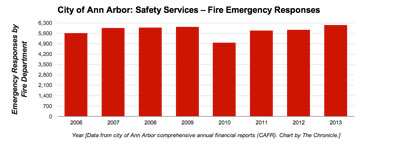
Ann Arbor emergency responses by fire department. (Data from city of Ann Arbor CAFR. Chart by The Chronicle.)
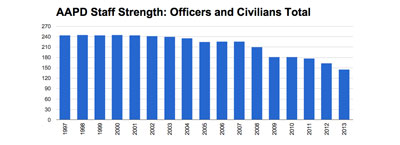
Ann Arbor police department staff strength. (Data from city of Ann Arbor CAFR. Chart by The Chronicle.)
Internal Council Business
On its Dec. 2 meeting agenda, the council also has a fair amount of its own internal business to wrap up, associated with the seating of the new council, which took place at the council’s Nov. 18 meeting.
That internal business includes adopting the council rules. Based on a less than 10-minute meeting of the council’s rules committee on Nov. 29, no changes to the rules were planned to be put forward at this time. The council’s rules committee – established by last year’s council – currently consists of Sabra Briere (Ward 1), Stephen Kunselman (Ward 3), Christopher Taylor (Ward 3) and mayor John Hieftje.
However, the .pdf file attached to the council’s online agenda – which reflects the council’s rules to be considered for adoption – includes a revision that was explicitly discussed and, for the time being, rejected at the committee’s Nov. 29 meeting. [.pdf of city council rules]
That change replaces “personality” (an archaic usage meaning a disparaging remark about a person) with “personal attack” in the following rule: “The member shall confine comments to the question at hand and avoid personality.” At the council’s Nov. 18 regular meeting, when the council voted to delay adoption of the rules pending a review of the rules, Chuck Warpehoski (Ward 5) had asked that the rules committee look at the rule requiring that councilmembers “avoid personality” during deliberations.
At the Nov. 29 committee meeting, Stephen Kunselman weighed in specifically for retaining the more archaic wording as reflective of history and tradition. The outcome of that committee discussion was that no changes would be recommended at this time, as any changes should be reviewed by the rules committee with its new membership. But based on the inclusion of the change in the Legistar document, it’s not clear what the status of that proposed change is meant to be.
A consensus on the committee at the Nov. 29 meeting seemed to be that the new membership of the rules committee should include Sally Petersen (Ward 2) in place of Kunselman, as Kunselman did not wish to continue on the rules committee. In addition, Petersen’s ethics initiative, which was approved at the council’s Nov. 18, 2013 meeting, tasks the rules committee with a certain amount of work – so the rules committee consensus on Nov. 29 appeared to be that the committee would be well-served by her membership.
The rest of the new council committee assignments are also supposed to be made at the Dec. 2 meeting.
The council’s calendar of regular meetings and work sessions will also be adopted at the Dec. 2 meeting. The basic pattern is first and third Mondays for regular meetings, except when there’s a holiday or an election during the week of the meeting.
The Chronicle could not survive without regular voluntary subscriptions to support our coverage of public bodies like the Ann Arbor city council. We sit on the hard bench so that you don’t have to. Click this link for details: Subscribe to The Chronicle. And if you’re already supporting us, please encourage your friends, neighbors and colleagues to help support The Chronicle, too!




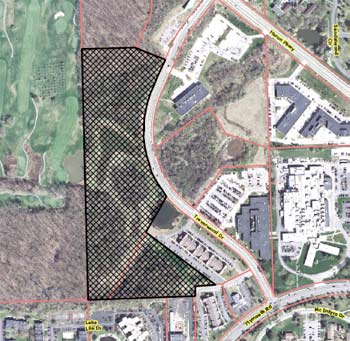
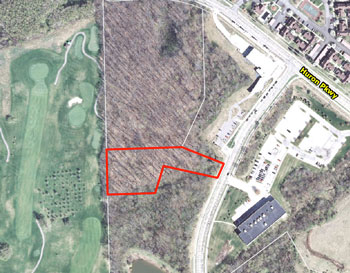
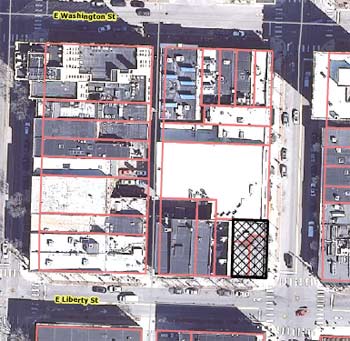
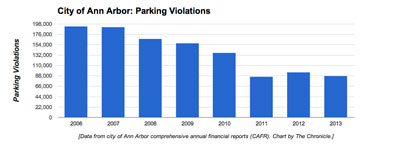
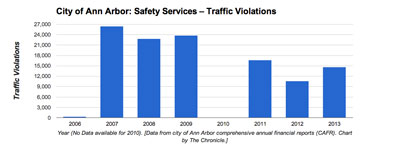
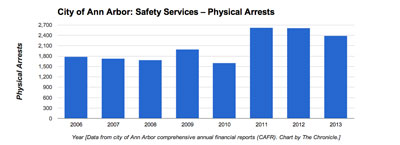
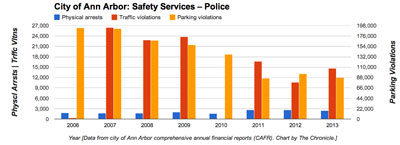
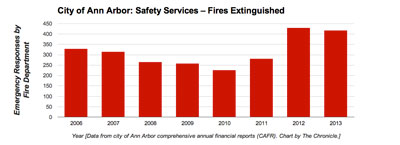
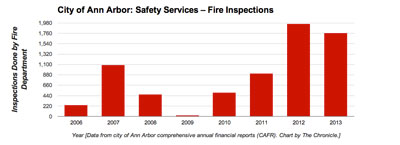

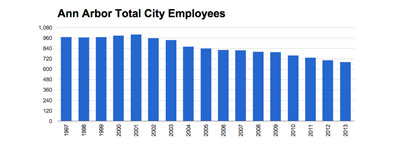
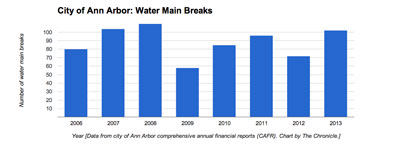

Give council the option of keeping land on the tax rolls, and there’s “scant” interest? Run the numbers and make a case for it. This new council seems hell-bent on not making any money. No one seems to be connecting the dots between revenue and services. If it’s up to them, we’ll keep downtown lots undeveloped and keep complaining about the evil U gobbling up more land. It’s the Ann Arbor way—why change?